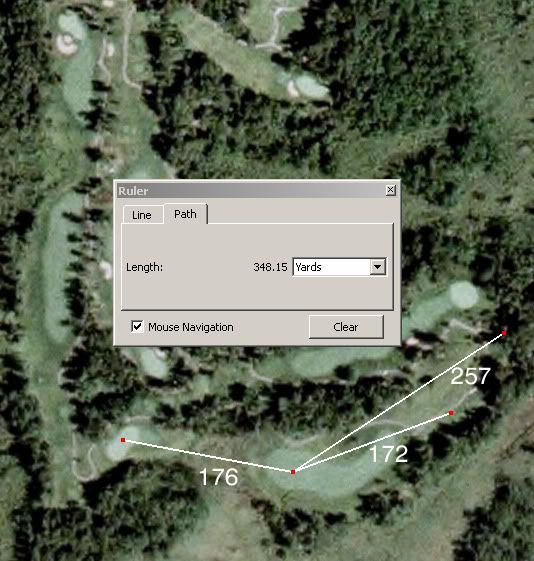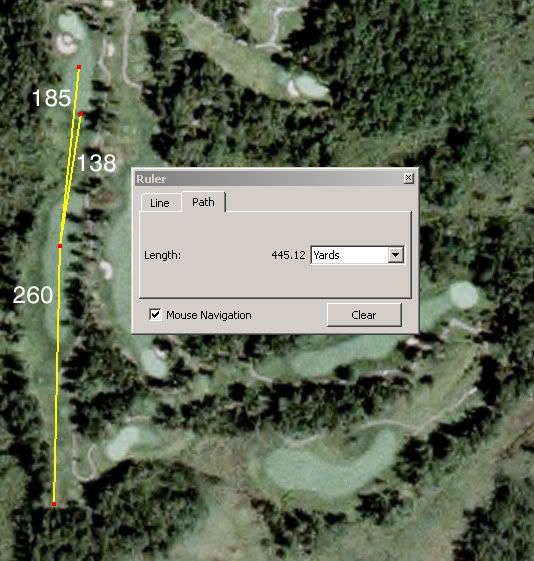I think the question is a legitimate line of inquiry and Iíd hope that we could have a fruitful discussion of it without falling back on prior arguments.
Itís difficult to encompass or frame the issue properly as there are many reasons that multiple sets of tees (for purposes of this discussion letís say that multiple is more than 3) get built and an equally large number of reasons that the ďincorrectĒ tees get played. So I wonít try to frame the problem as a whole, Iíll just try to give one example that I find difficult to deal with, if not to understand.
Some background to my example. The course in my example is 6600 yards from the back tees, Iíve usually played these tees or up one set. Iíve traditionally been able to hit it solid enough on average to drive the ball 240+ yards as a general rule. This season Iíve lost a ton of distance for reasons unknown to me, but my general ability is about the same, this is why I even noticed this problem.
My example then is illustrated in the next two images.
In this one (hole 5) you can see itís a dogleg to the right. The hole is flat except itís uphill about 20 feet from the wetland (located under where ď176Ē is typed) to the green.

Now in the previous image Iíve depicted 2 drives from two sets of tees. There is no real way to get closer to the wetland without risking going into it. In a case like this, moving up a set of tees wouldnít help someone capable of hitting the ball over 260 yards. The image above also highlights another problem, and one that I encountered the last time I played there. There is no way around that hazard. If you canít carry the ball at least 100 yards in the air, you are screwed. Scratch that, you can play up to the hazard and then putt the ball to the right, over into the woods and follow the cartpath. I seriously doubt anyone could score less than thirty on the hole in that scenario. For myself with my lost distance I was left with the fun option of ďTee shot, bunt it about 75 yards, then full swingĒ. This last fact wouldnít be so bad but for the context of the course where several holes have similar difficulties, Including the next hole.
In this one (hole 6) the large wetland comes into play on the second shot on a par 5.

Again, in a vacuum, itís not so bad. And in this case moving up a set of tees might help. But now the issue becomes whether the tee spacing makes sense. In my case, if I had moved up a set of tees for this hole (or for the entire day) I would have been fine. But if Garland was playing the white tees and for this hole moved up a set, he would have stood a good chance of driving into the hazard (you canít see the start of the hazard from the tee btw).
So, is the issue one of choosing the right tees or of deficiencies in the golf course? (Note I didnít say design deficiencies because in reality the designer may not have had any better alternatives.) The problem is complex because you canít generalize. On the other hand the greatest of the great courses (from what Iíve read) donít have nearly the issue with tee choice (Pine Valley excepted). Is it because they were built on land better suited to the purpose, or because they were designed with more thought into how all levels of player would be interacting with the course? Is it some other thing that Iím not comprehending? In a case or question like this thread, I think it would be better to bring up specific examples rather than talk in generalities.